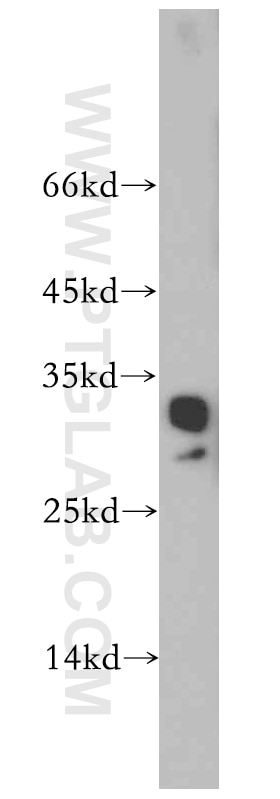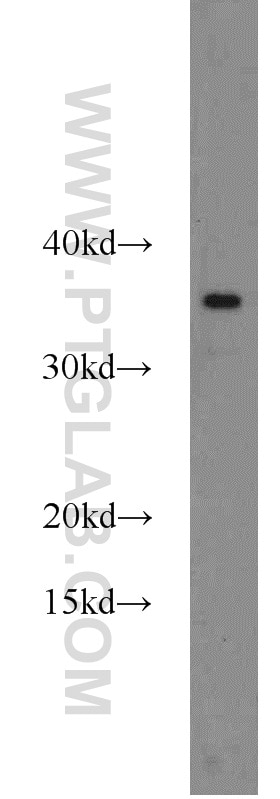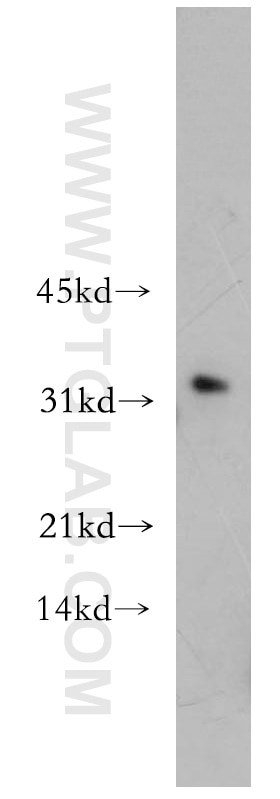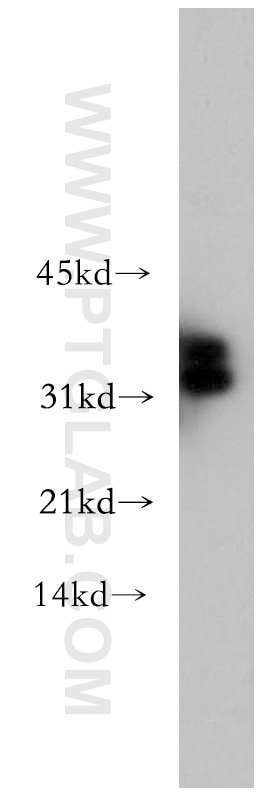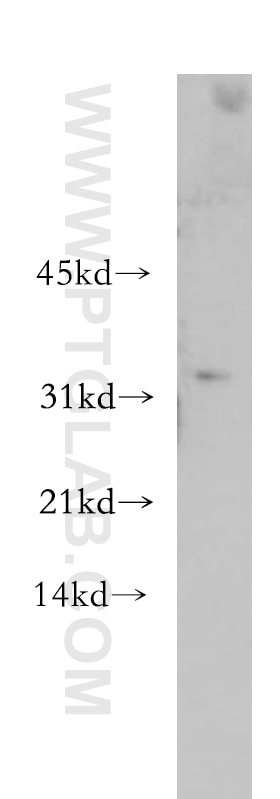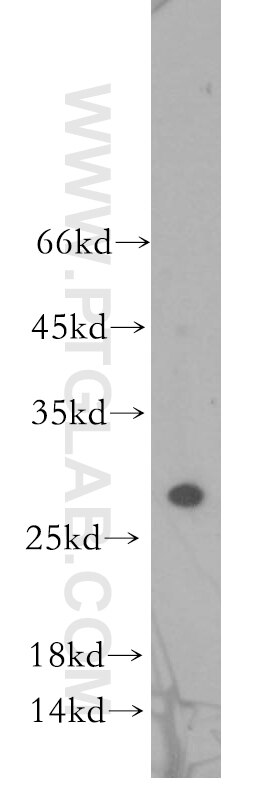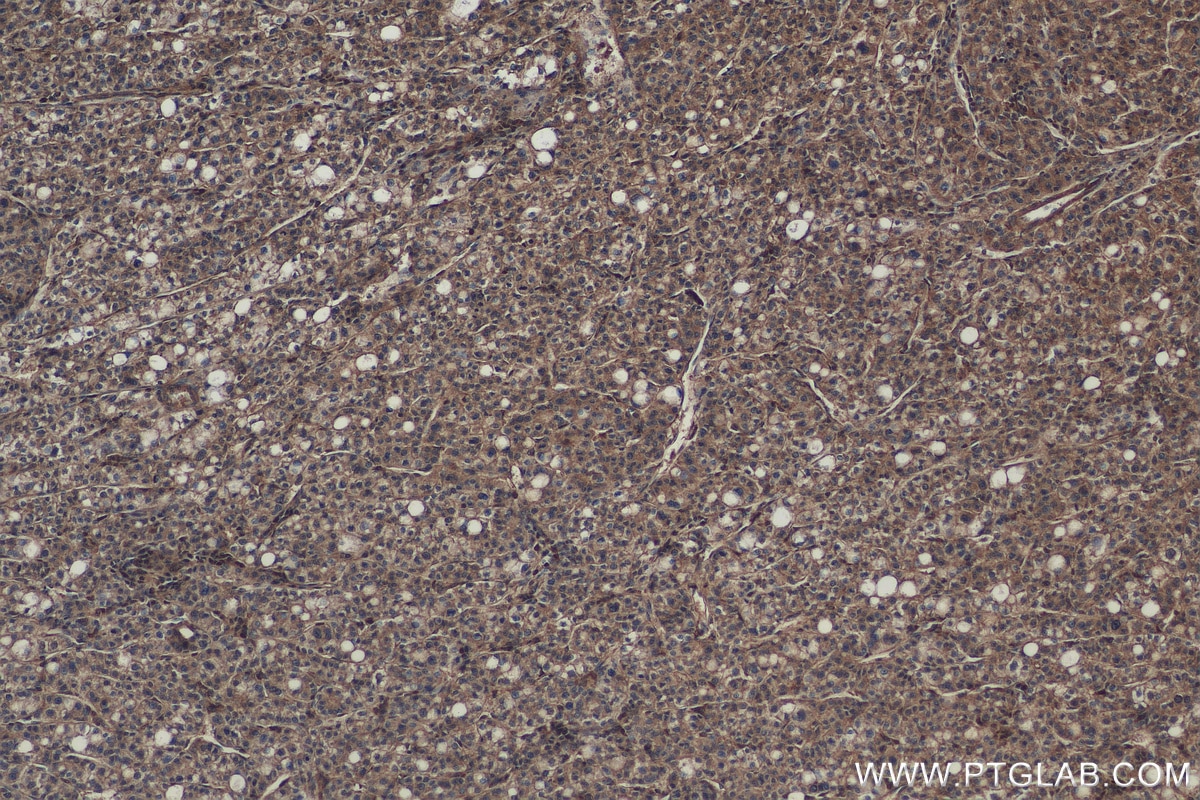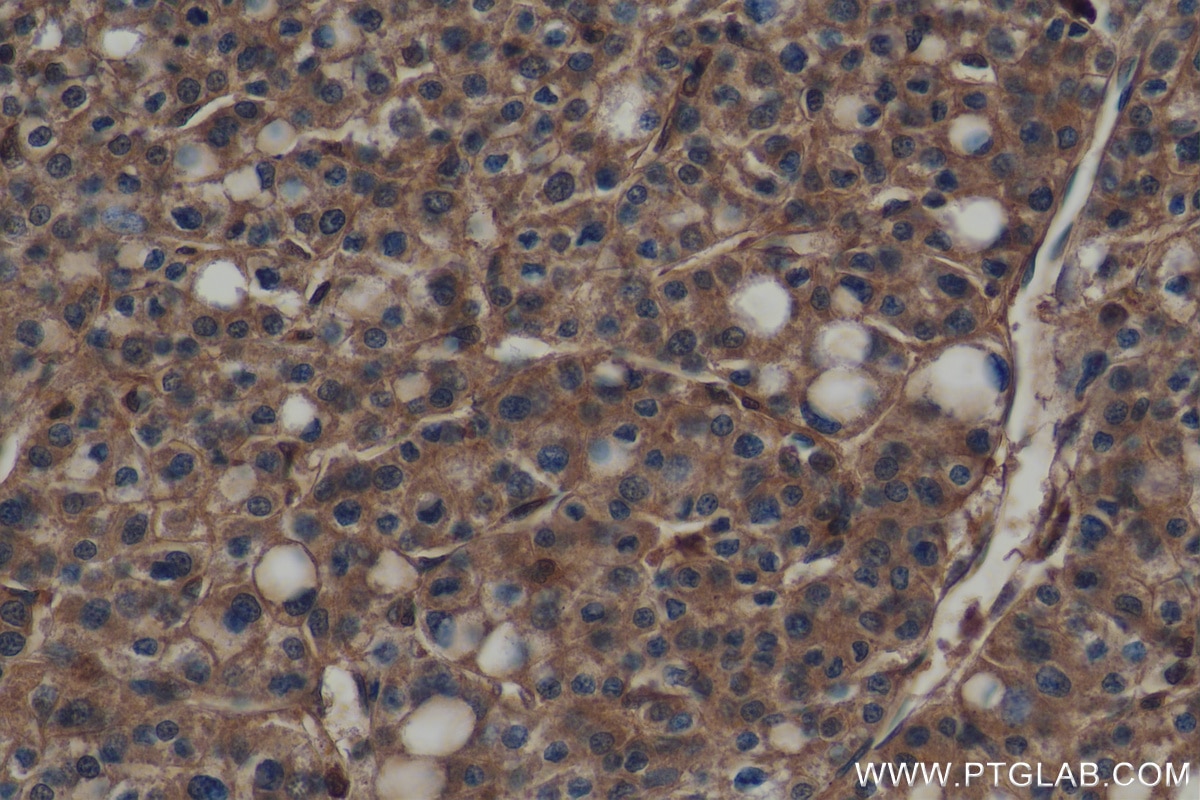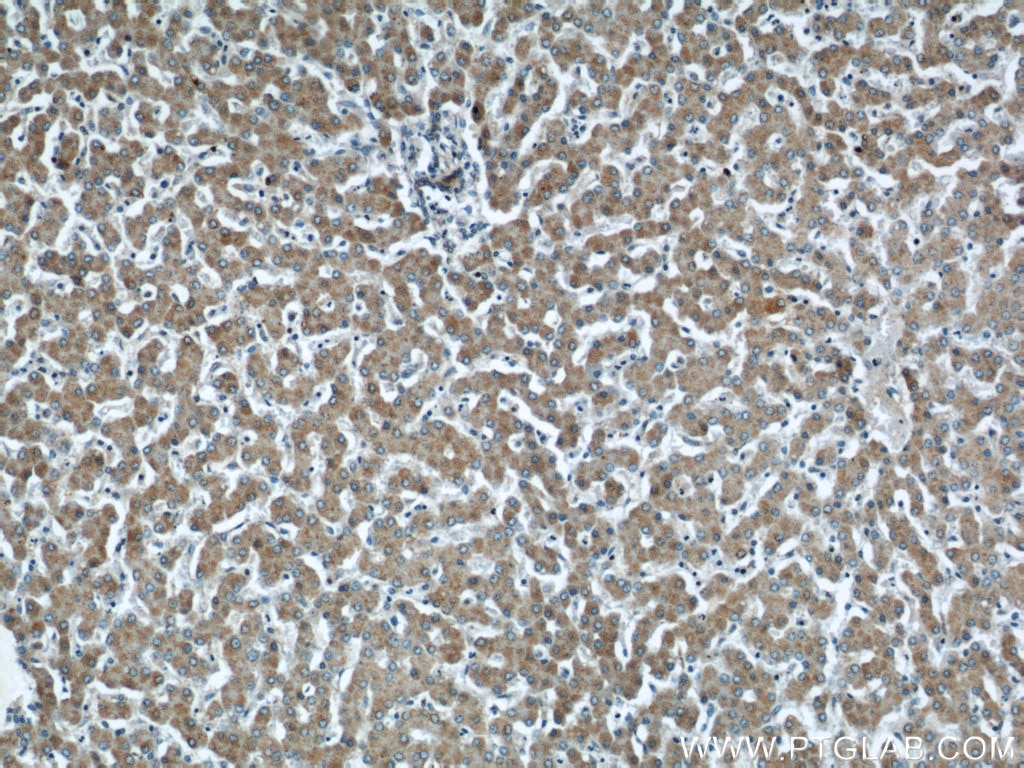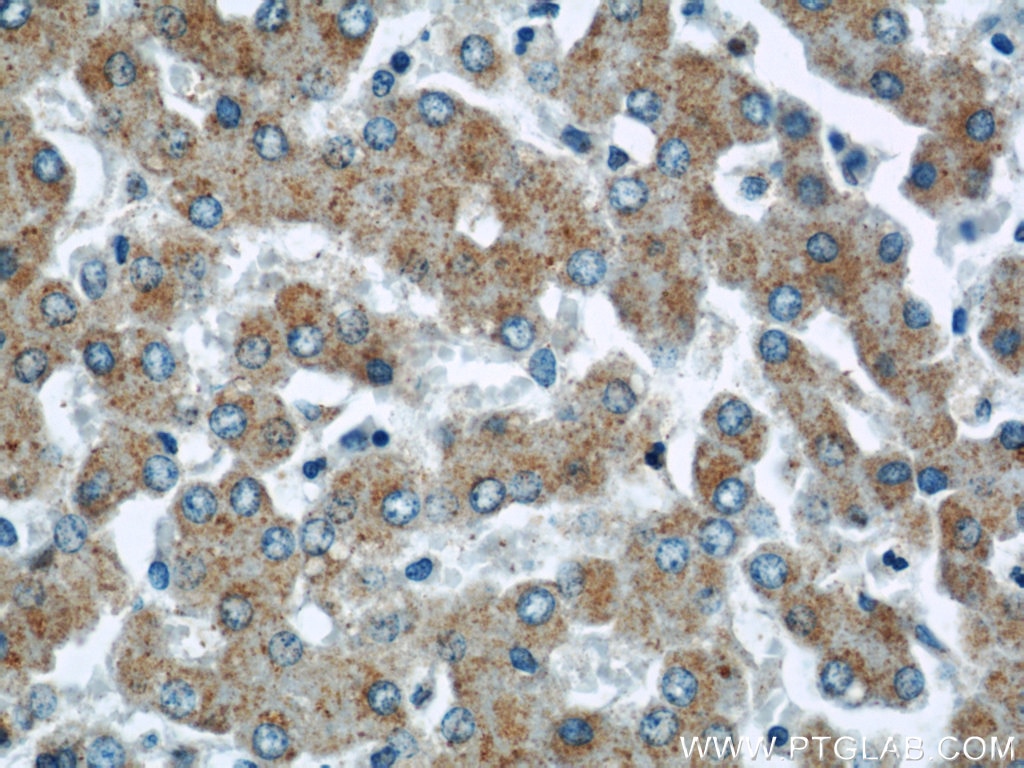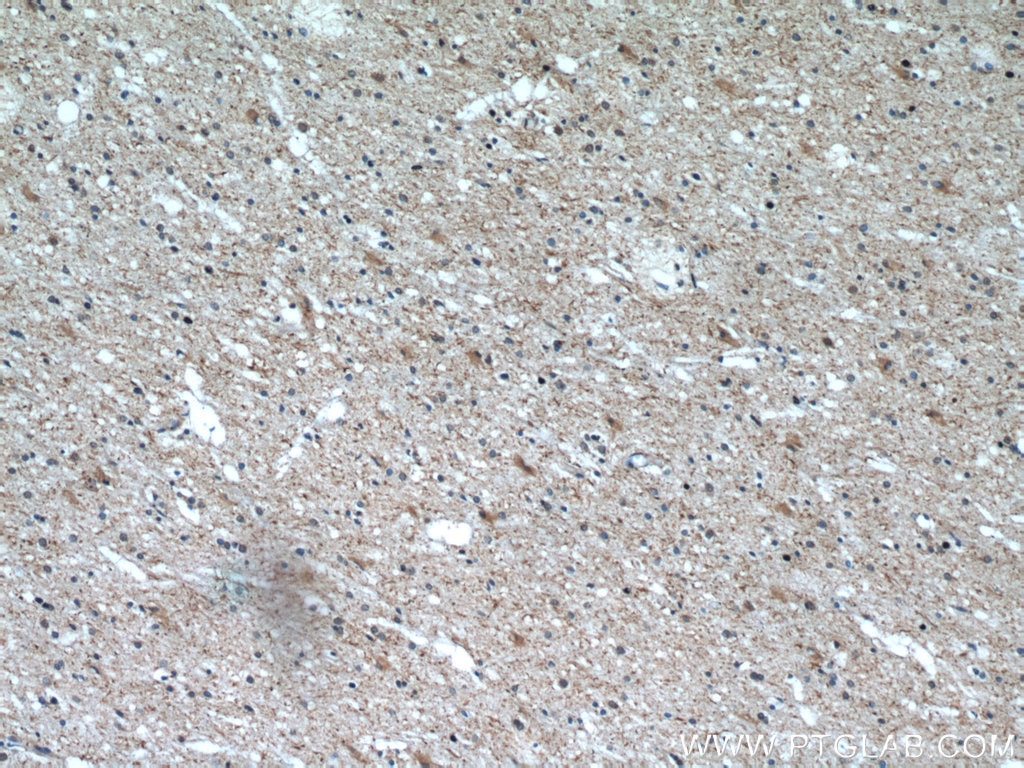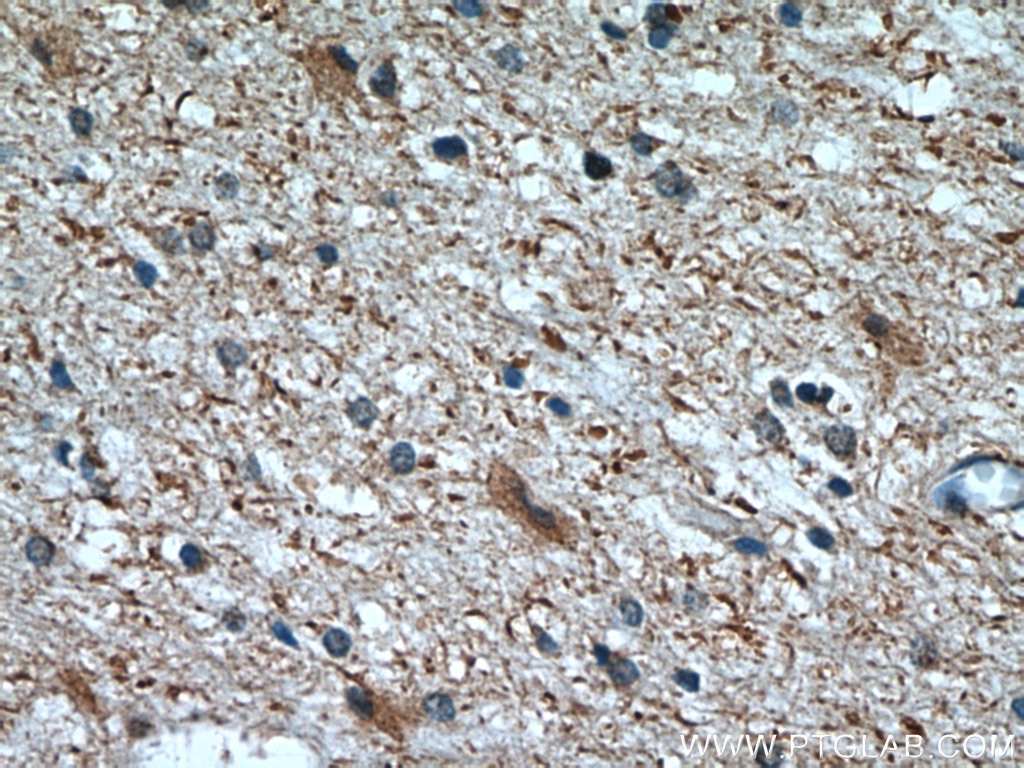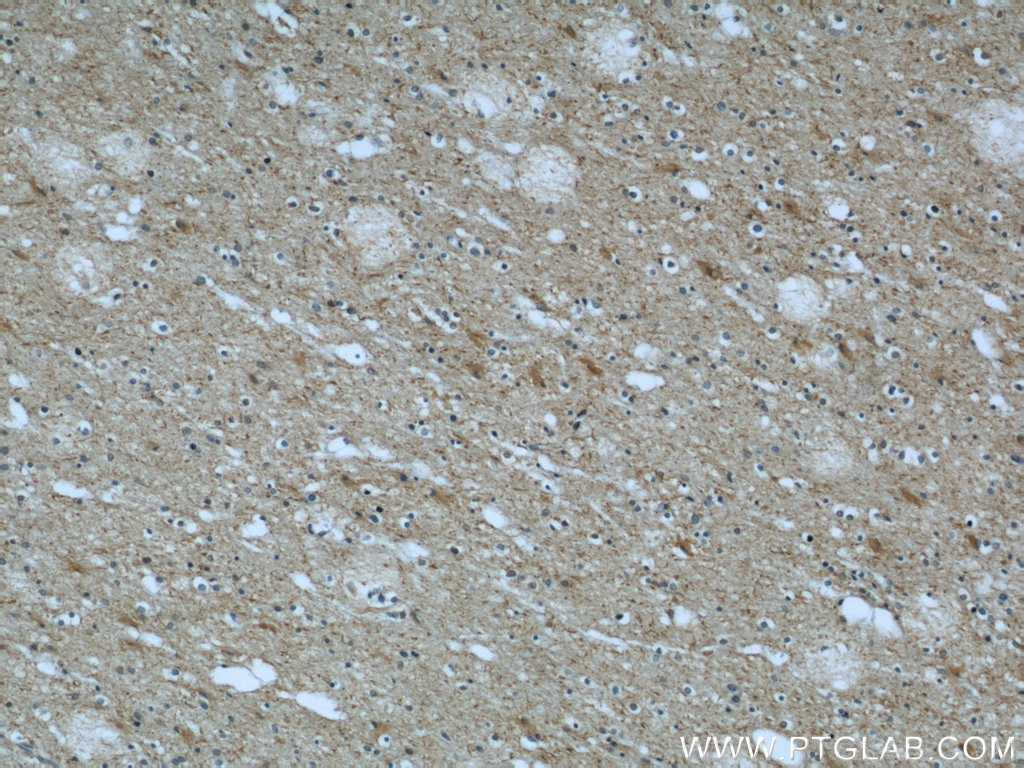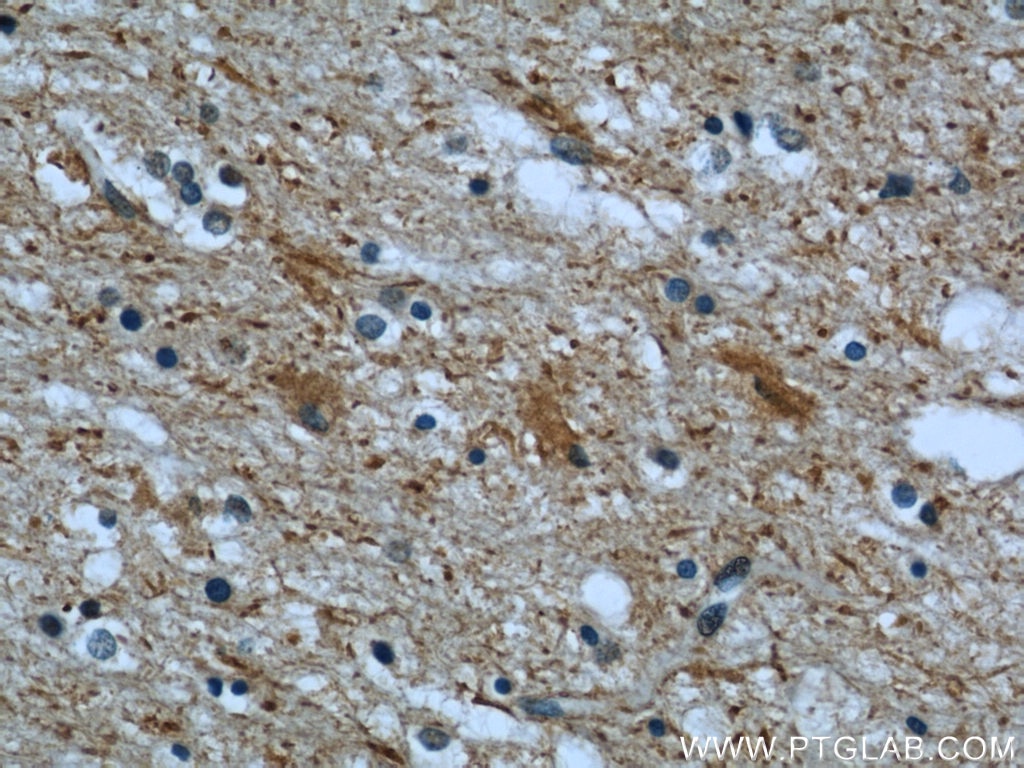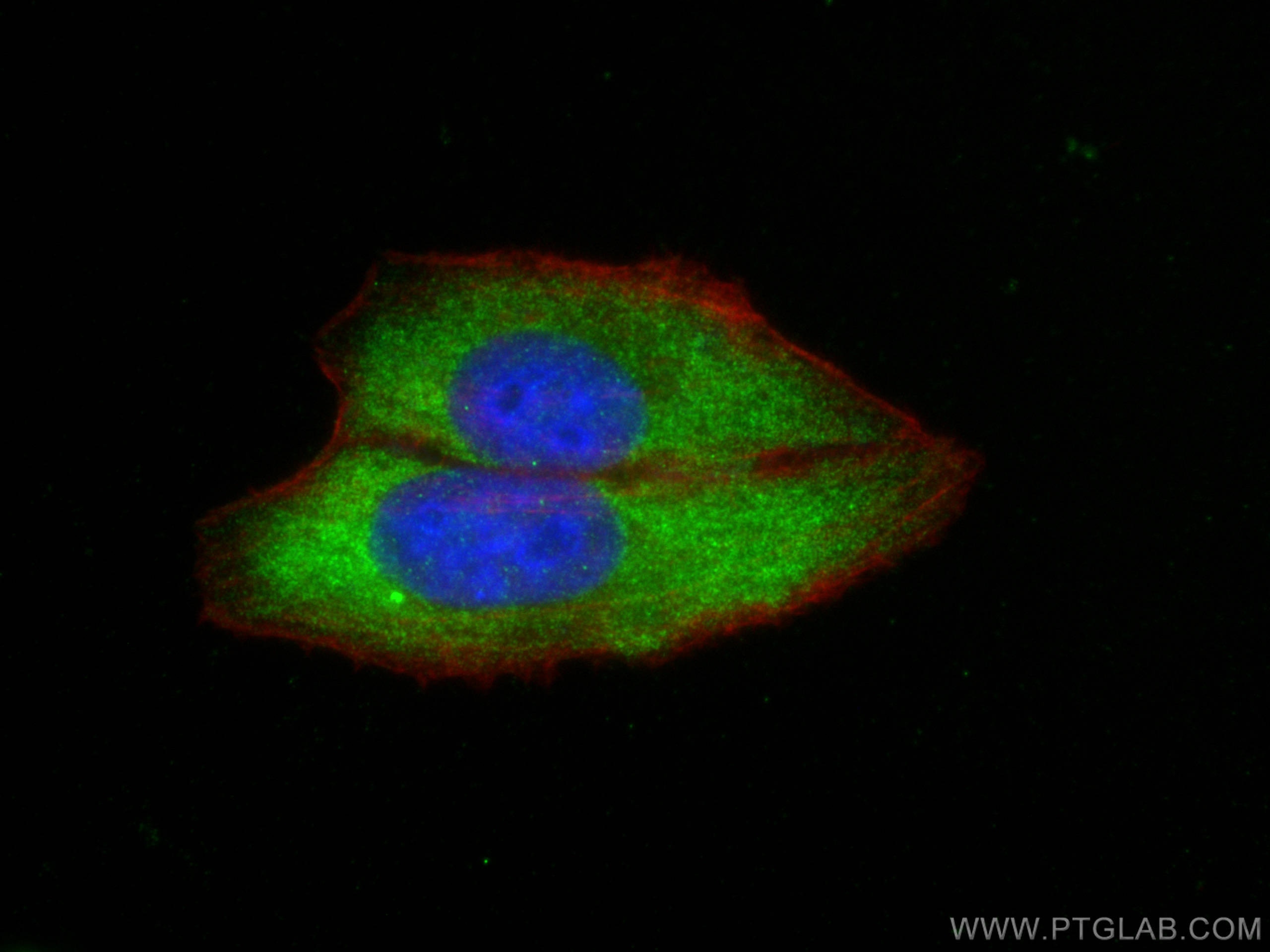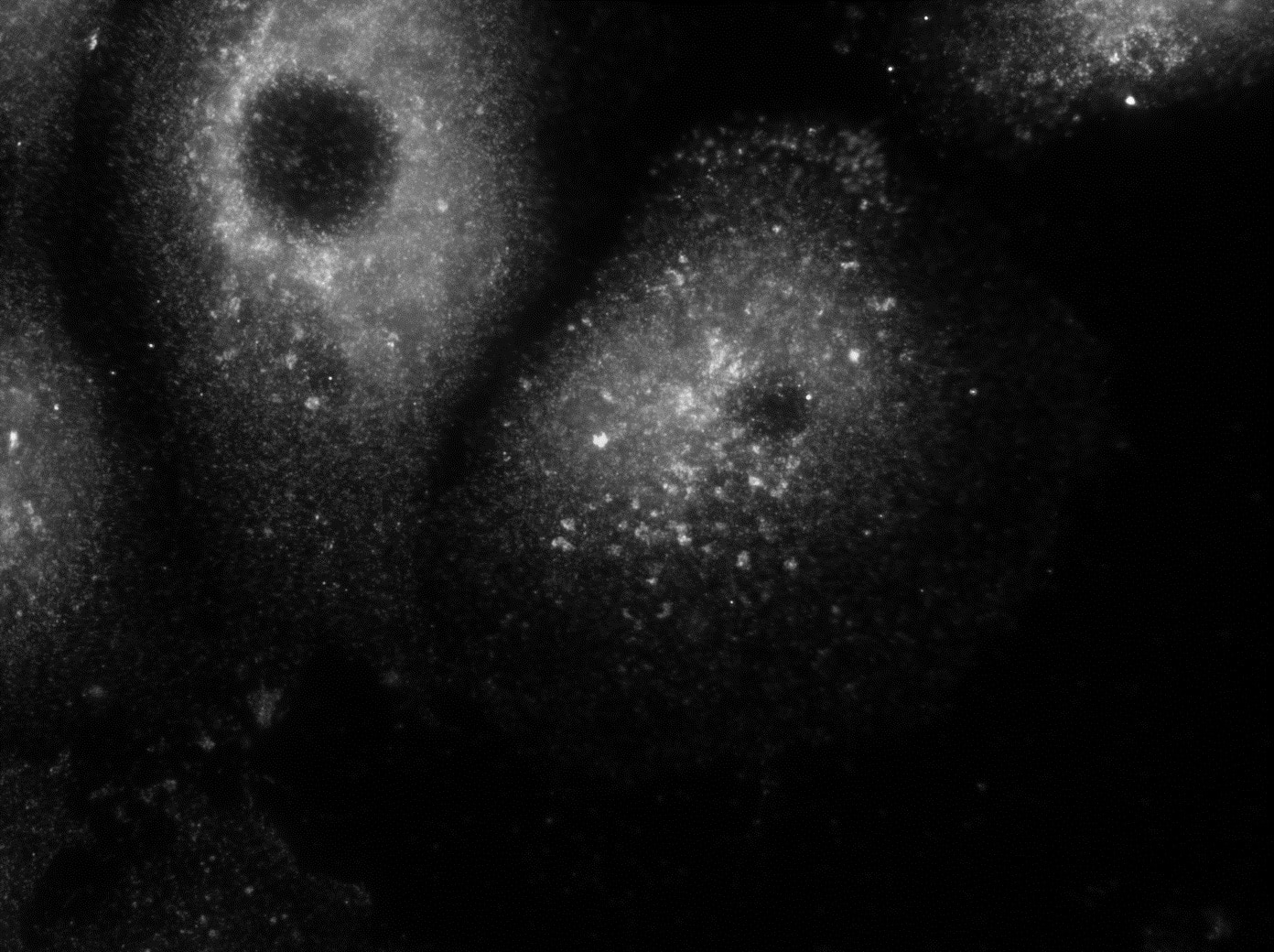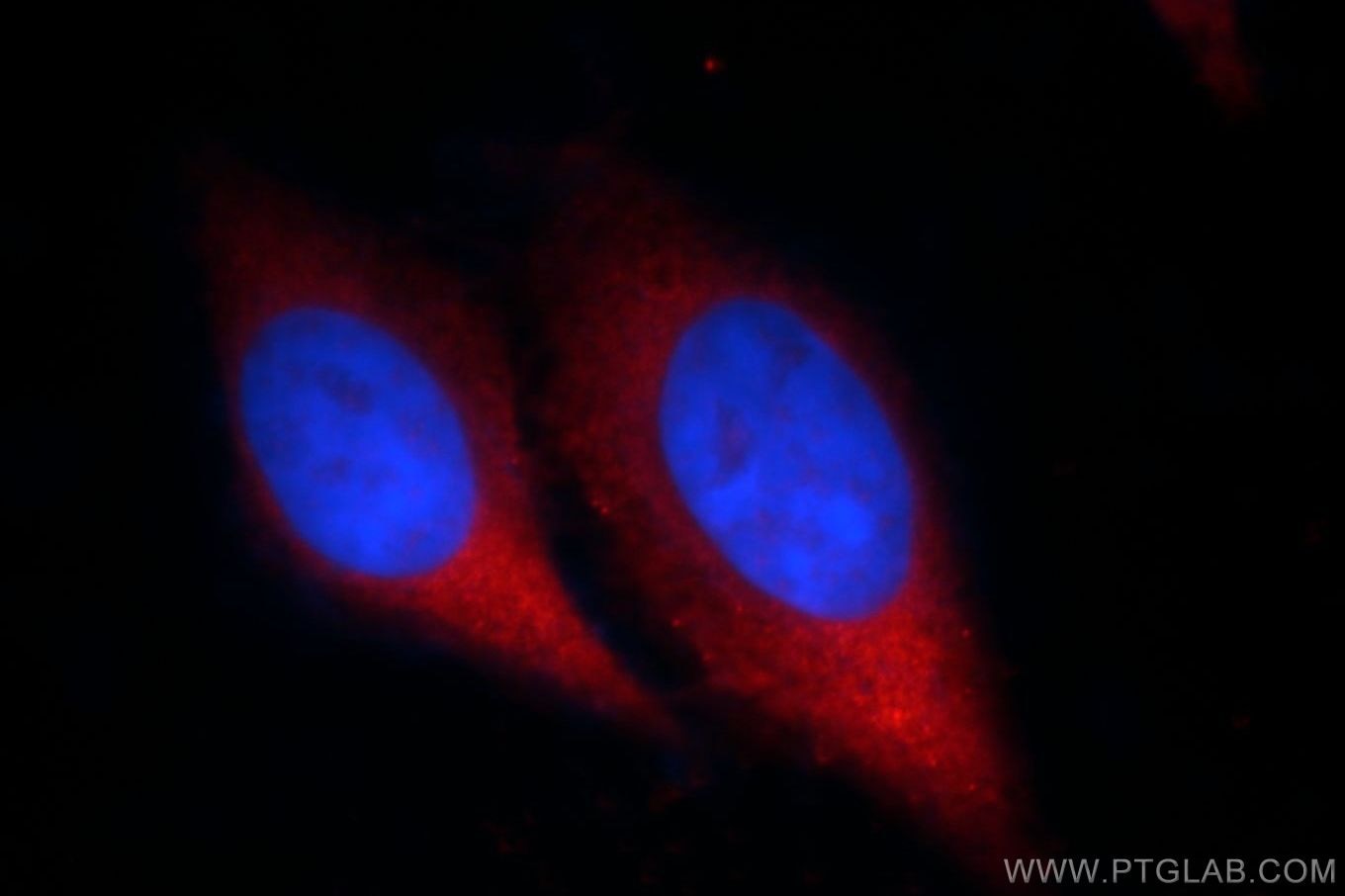Validation Data Gallery
Tested Applications
| Positive WB detected in | NIH/3T3 cells, human heart tissue, mouse brain tissue, human ileum tissue, human kidney tissue, human placenta tissue, human brain tissue |
| Positive IHC detected in | mouse brain tissue, human brain tissue, human liver cancer tissue, human liver tissue Note: suggested antigen retrieval with TE buffer pH 9.0; (*) Alternatively, antigen retrieval may be performed with citrate buffer pH 6.0 |
| Positive IF/ICC detected in | HepG2 cells, PFA fixed cells |
Recommended dilution
| Application | Dilution |
|---|---|
| Western Blot (WB) | WB : 1:1000-1:4000 |
| Immunohistochemistry (IHC) | IHC : 1:200-1:800 |
| Immunofluorescence (IF)/ICC | IF/ICC : 1:50-1:500 |
| It is recommended that this reagent should be titrated in each testing system to obtain optimal results. | |
| Sample-dependent, Check data in validation data gallery. | |
Published Applications
| KD/KO | See 1 publications below |
| WB | See 11 publications below |
| IHC | See 2 publications below |
| IF | See 7 publications below |
| IP | See 2 publications below |
Product Information
12527-1-AP targets CHMP2B in WB, IHC, IF/ICC, IP, ELISA applications and shows reactivity with human, mouse, rat samples.
| Tested Reactivity | human, mouse, rat |
| Cited Reactivity | human, mouse, rat, pig |
| Host / Isotype | Rabbit / IgG |
| Class | Polyclonal |
| Type | Antibody |
| Immunogen |
CatNo: Ag3222 Product name: Recombinant human CHMP2B protein Source: e coli.-derived, T-HIS Tag: 6*His Domain: 1-213 aa of BC001553 Sequence: MASLFKKKTVDDVIKEQNRELRGTQRAIIRDRAALEKQEKQLELEIKKMAKIGNKEACKVLAKQLVHLRKQKTRTFAVSSKVTSMSTQTKVMNSQMKMAGAMSTTAKTMQAVNKKMDPQKTLQTMQNFQKENMKMEMTEEMINDTLDDIFDGSDDEEESQDIVNQVLDEIGIEISGKMAKAPSAARSLPSASTSKATISDEEIERQLKALGVD 相同性解析による交差性が予測される生物種 |
| Full Name | chromatin modifying protein 2B |
| Calculated molecular weight | 24 kDa |
| Observed molecular weight | 32 kDa |
| GenBank accession number | BC001553 |
| Gene Symbol | CHMP2B |
| Gene ID (NCBI) | 25978 |
| RRID | AB_10603358 |
| Conjugate | Unconjugated |
| Form | |
| Form | Liquid |
| Purification Method | Antigen affinity purification |
| UNIPROT ID | Q9UQN3 |
| Storage Buffer | PBS with 0.02% sodium azide and 50% glycerol{{ptg:BufferTemp}}7.3 |
| Storage Conditions | Store at -20°C. Stable for one year after shipment. Aliquoting is unnecessary for -20oC storage. |
Background Information
CHMP2B, chromatin-modifying protein 2b, also named CHMP2.5, VPS2B, and VPS2 2, belongs to the chromatin-modifying protein / charged multivesicular body protein (CHMP) family. It is a component of the endosomal sorting complex required for transport III (ESCRT-III), which involves in endosomal and autophagic trafficking of proteins to lysosomes for degradation. Mutations of CHMP2B lead to C-terminal truncation or are replaced with mis-splicing C-termini and cause frontotemporal lobar degeneration (FTLD). In CHMP2B mutation patients, p62- and ubiquitin-positive, but TDP-43 and FUS negative neural inclusions are formed, which may be caused by impaired lysosomal degradation through the autophagy and endosome-lysosome pathways.
Protocols
| Product Specific Protocols | |
|---|---|
| IF protocol for CHMP2B antibody 12527-1-AP | Download protocol |
| IHC protocol for CHMP2B antibody 12527-1-AP | Download protocol |
| WB protocol for CHMP2B antibody 12527-1-AP | Download protocol |
| Standard Protocols | |
|---|---|
| Click here to view our Standard Protocols |
Publications
| Species | Application | Title |
|---|---|---|
Nat Cell Biol Endosomal membrane tension regulates ESCRT-III-dependent intra-lumenal vesicle formation. | ||
PLoS Pathog Cellular ESCRT components are recruited to regulate the endocytic trafficking and RNA replication compartment assembly during classical swine fever virus infection. | ||
Cell Death Dis iASPP-PP1 complex is required for cytokinetic abscission by controlling CEP55 dephosphorylation. | ||
J Neurosci Nascent Aβ42 Fibrillization in Synaptic Endosomes Precedes Plaque Formation in a Mouse Model of Alzheimer's-like β-Amyloidosis | ||
Oncotarget Downregulation of vimentin expression increased drug resistance in ovarian cancer cells. | ||
Sci Rep VPS4 is a dynamic component of the centrosome that regulates centrosome localization of γ-tubulin, centriolar satellite stability and ciliogenesis. |


